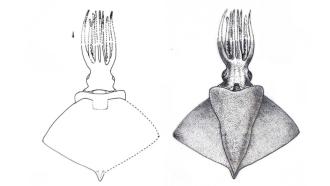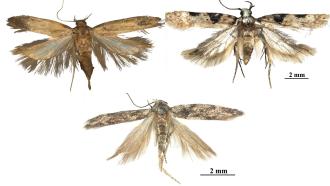
Photo: K. S. Gopi Sundar
The Sarus Crane is the tallest flying bird in the world, standing nearly as tall as a person and easily distinguishable by its overall grey colour and the contrasting red head and upper neck. Like other cranes, these birds have gained fame in pop culture for another one of their traits – their lifelong pair bonds and the synchronised duets that mated pairs perform. These cranes are a beloved part of the landscape in parts of India and Southeast Asia, often living close to human farms. However, despite their iconic status, Sarus Cranes are vulnerable, facing threats from habitat loss, pollution, and other human activities. Protecting them requires understanding their lives, and that includes knowing who's who in the population, specifically, telling the males from the females.
Did You Know? Sarus Cranes have historically been widely distributed on the lowlands of India along the Gangetic plains, extending from coastal Gujarat in the west-to-West Bengal and Assam in the east. Nowadays, they are mainly concentrated near the rice fields of Uttar Pradesh. |
Sarus Cranes are what scientists call monomorphic. This means males and females look incredibly similar. Unlike many bird and animal species where the male is brightly coloured or much larger or smaller, Sarus Cranes don't have noticeable visual differences based on sex. This makes it challenging for researchers and conservationists to gather crucial information, such as the number of males and females in an area, the success of breeding pairs, or even the compatibility of pairs in captive breeding programs.
Traditional methods, like measuring the birds, can be unreliable because their sizes overlap a lot. Genetic testing is accurate, but it requires capturing the birds, which is an invasive, costly, and time-consuming process. Simply watching their behaviour can help, but it takes a lot of time in the field and depends heavily on the observer's skill and good environmental conditions.
But what other cues can be used to differentiate between individuals? This is the question K. S. Gopi Sundar, an independent researcher from Karnataka, set out to answer. Along with another researcher, Suhridam Roy at the Nature Conservation Foundation, they focused on the Sarus Crane's complex duets, those coordinated calls sung by mated pairs. They suspected that even though the birds look alike, their voices might have distinct signatures that reveal their sex. The findings are published in Bioacoustics, the International Journal of Animal Sound and its Recording recently.
To investigate this, they travelled across eight districts in North India: Anand and Kheda in Gujarat; Rohtak and Jhajjar in Haryana; and Etawah, Mainpuri, Unnao, and Rae Bareli in Uttar Pradesh (UP). They recorded duets from 136 pairs of Sarus Cranes living in farmlands and wetlands, collecting a total of 215 duet recordings. They approached the cranes carefully on foot to minimise disturbance, recording spontaneous duets whenever possible. If the cranes didn't start singing on their own, the researchers would play a recording of another crane duet to encourage them, waiting patiently for a response. Then, using microphones and recorders to capture the sounds.
Back in the lab, they used software to analyse the sound waves of the duets, creating visual representations called spectrograms. They carefully outlined each individual note within the duets and measured various acoustic features, like the note's duration (how long it lasted), its frequency (how high or low-pitched it was), how much the pitch changed over time (modulation), and the shape of the sound's energy distribution (spectral shape, skewness, kurtosis). They extracted 24 different measurements for individual notes and 28 for the entire duet.
To figure out which bird was singing which note, the researchers used a combination of observation and the known structure of the Sarus Crane duet. They knew from field observations and some video recordings that the female Sarus Crane always starts the duet. The male joins in afterwards, often performing a distinctive open-wing display.
By identifying the first note as female, they could then follow the pattern of the duet. They also noticed auditory and visual differences in the calls: female calls sounded higher-pitched and smoother, while male calls were lower-pitched and coarser. This helped them assign sex to the subsequent notes, checking if the tempo (notes per second) matched the typical pattern, where females sing faster than males.
With the measurements and sex assignments, they used statistical models to see if the acoustic features could reliably predict the sex of the singer. They used multiple techniques, like Principal Component Analysis (PCA) and Generalised Linear Mixed Models, to simplify the data. The techniques allowed them to simplify the large amount of data from the acoustic measurements. It also allowed them to test how accurately they could assign sex based on the sound features of different parts of the duet: the introductory notes, the trill notes, and the main notes.
They discovered significant acoustic differences between male and female calls within the duets. Male notes, they found, were generally longer, had a broader frequency range, and were more modulated, meaning the pitch changed more. They also had a slower singing tempo. Female notes, on the other hand, were shorter, higher pitched, had a narrower frequency range, were less modulated, and had a faster tempo. The female calls also had a more asymmetric spectral shape and a peaked, smoother fundamental frequency contour compared to the male's flatter, rougher contour.
When they tested how well their models could predict sex based on these acoustic features, they found varying levels of accuracy depending on which part of the duet they analysed. The introductory notes, which sound similar to alarm calls, allowed for sex identification with about 75% accuracy. The trill notes, similar to flight calls, were less reliable, with an accuracy of approximately 65%. However, the main notes, which sounded like contact calls, were the most reliable, allowing them to correctly identify the sex of the singer 81% of the time.
The research could significantly improve our methods for sexing Sarus Cranes by offering a non-invasive and potentially more scalable approach. While other studies have examined acoustic sexing in various crane species or other monomorphic birds, this is the first detailed investigation into how sex is encoded within the different sections of the Sarus Crane duet. It shows that specific parts of the duet, particularly the main notes, are much more informative for sex identification than others.
However, the study does mention some limitations. For example, for 61% of the pairs, they only had one recorded duet. The researchers suggest that having more recordings from each pair in future studies could help improve the accuracy of sex classification. They also suggest that including other types of calls, such as individual contact calls or calls made by cranes of different ages, could provide a more comprehensive picture of vocal differences.
Ultimately, the work provides a valuable new tool for the conservation and study of Sarus Cranes. Because acoustic recording is non-invasive and can be done from a distance, it's perfect for monitoring these birds in their natural habitats, including remote or human-disturbed areas where other methods are complex. By using automated tools to analyse recordings, conservationists can potentially monitor large numbers of cranes over vast areas, gaining crucial insights into population health, sex ratios, and breeding success without ever having to handle the birds. This understanding is vital for developing effective strategies to protect the world's tallest flying bird for future generations.
Editor's Note: The story was updated with a different photo to depict the photo of a duet instead of a triet used earlier. The error is regretted.
This article was written with the help of generative AI and edited by an editor at Research Matters.





